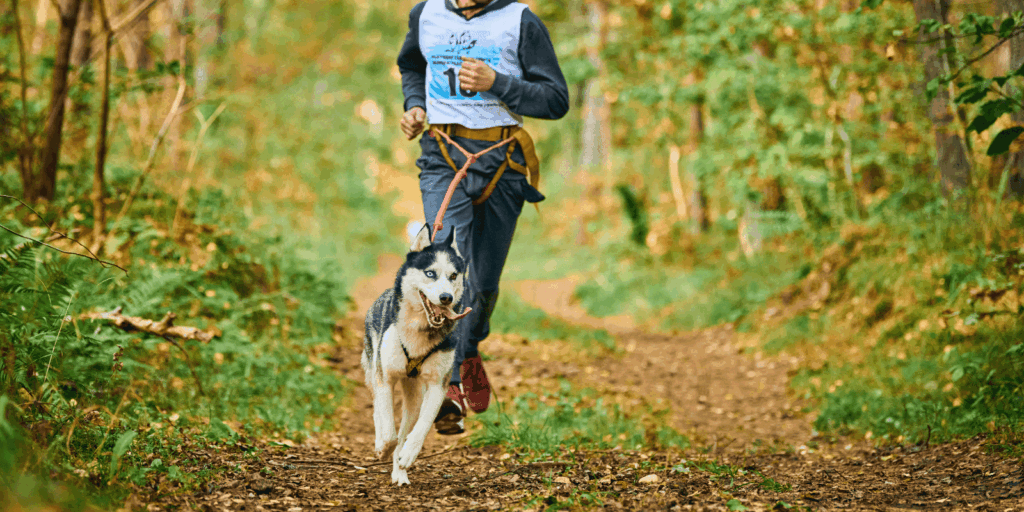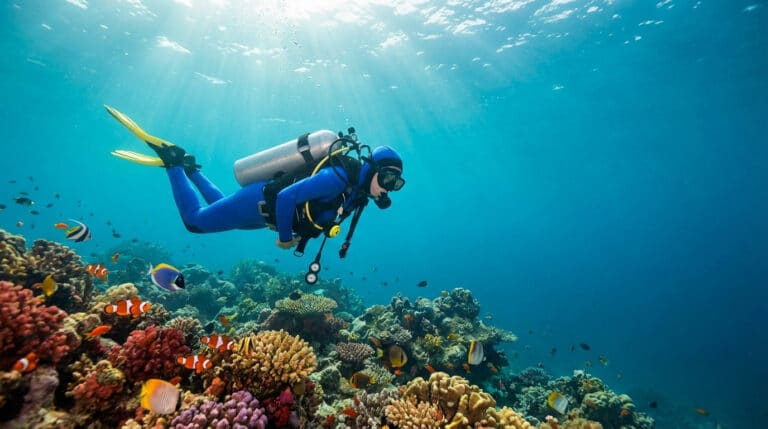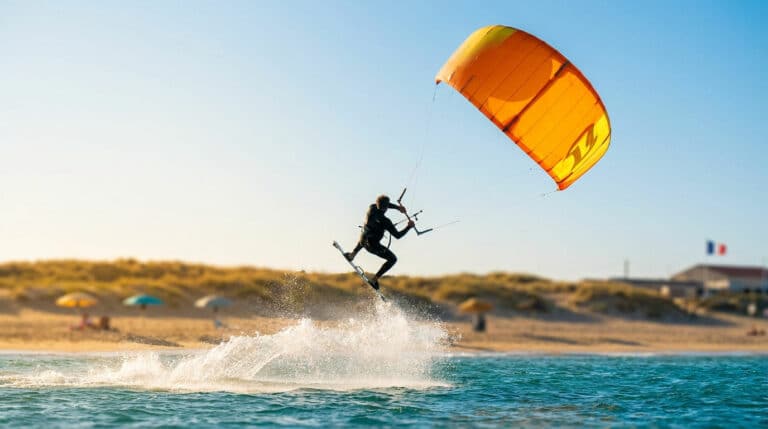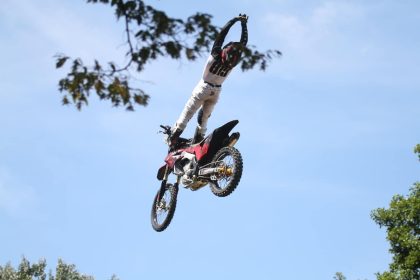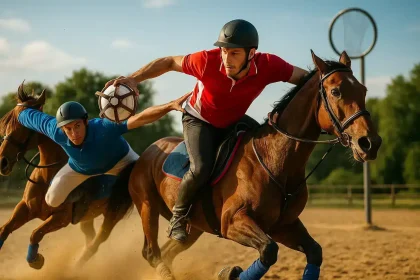Canicross is a booming canine sport that combines running, pulling and bonding between the runner and their dog. To get started safely, suitable canicross gear is essential: it ensures comfort, performance and protection for both.
Whether you’re already a runner or new to dog sports, choosing the right accessories is key: harness, belt, running line, and additional gear. The goal? Avoid injury, optimise pulling, and ensure a smooth, enjoyable and respectful experience for your dog.
Here’s everything you need to know to choose the right canicross kit, whether you’re running on roads, trails, forests or doing bikejoring.
The essential trio for a complete canicross setup
To practise canicross in good conditions, you need gear that suits both the dog and the runner. Three elements are essential: a pulling harness, a belt (or hip belt), and a running line (also called leash or bungee line). This trio forms the base of safe and comfortable canicross equipment.
1. The dog pulling harness
This is the central piece of canine gear. Unlike a standard harness, a canicross harness is designed to optimise pulling while allowing full range of motion and easy breathing. It avoids thoracic compression and distributes pulling force evenly across the dog’s body.
Key points to check when choosing a good harness:
- Length: it should go down to the base of the tail
- Ergonomic shape to avoid interfering with shoulders or ribcage
- Breathable, padded fabric for comfort even on long runs
- Strong anchor points that can withstand varied terrain
Brands like Inlandsis, Zero DC, Back On Track, Dog Control, and Trixie are known for quality canine products. You can also start with a full canicross kit, which is often more affordable and easier for beginners.
2. The belt or hip belt: key equipment for the runner
A vital part of any canicross setup, the traction belt (or hip belt) connects the runner to the dog while providing solid back support. It sits on the hips to reduce lower back strain and ensure smooth power transmission.
Unlike a basic hiking belt, a canicross belt is specifically designed for running with a dog, with adjustments and attachment systems tailored for pulling.
Essential features to look for:
- Belt width: wider models reduce pressure on the lower back
- Precise adjustments: for a stable fit no matter your size
- Secure attachment: strong carabiner or sliding clip for smooth movement
- Pockets or built-in pouch: handy for water, treats or poop bags
Recommended brands include Martin System, Non-stop Dogwear, Canix and Inlandsis, known for comfort, durability and shock absorption.
3. The running line with shock absorber: vital link between you and your dog
The final piece of the canicross kit, the running line connects your dog to your belt. This technical gear must balance strength, elasticity and comfort for both partners.
- Recommended length: about 2 meters extended, 1.20 m at rest
- Built-in shock absorber: crucial to absorb jolts when the dog speeds up or changes pace
- Reinforced carabiners: strong ends that ensure safety and work with your chosen harness and belt
Some running lines are sold individually, others come as part of complete kits (Inlandsis, Trixie, Non-stop Dogwear). You can also find models adapted for bikejoring if you want to switch disciplines with the same gear.
Useful accessories to enhance your canicross experience
Beyond the basic gear, some accessories can make your outings more enjoyable and safer for both you and your dog:
- Trail shoes: great for running on natural terrain, forests or mountains. They offer better grip and help prevent falls.
- Hydration backpack: essential for long runs so you stay hydrated without stopping. Some models come with extra space for first aid kits, keys or a spare leash.
- Foldable dog water bottle: light, easy to carry, and lets you hydrate your dog after the run. A nice bonus for comfort and recovery.
- Reflective vest: if you run early or late, this is key for your safety and your dog’s. Dog versions exist too.
- First aid kit: helpful for minor injuries, irritated paws or accidents. Especially useful if you’re far from urban areas.
These extras aren’t mandatory, but they can turn a basic outing into a truly comfortable experience.
Adjusting your canicross gear to your dog’s profile
Choosing the right gear isn’t just about you it has to match your dog’s size, fitness and behavior. Each dog profile has specific needs in terms of harness, line and gear.
- For a strong or experienced dog: choose a long harness designed for intense pulling, with a sturdy shock-absorbing line
- For a small or less experienced dog: opt for a short, light harness that allows greater freedom, paired with a softer line
- For puppies or beginners: go for a simpler, entry-level canicross kit that is more comfortable and stress-free, with short and gradual sessions
Practical tip: always take your dog’s exact measurements (neck, chest and back length) before buying. Sizes vary between brands and models. A poorly fitted harness can cause chafing or restrict breathing during effort.
Where to buy your canicross gear?
You’ve got several options:
- Online: on specialised sites like Sportcanin, Canikaz, Matdog or canine sports gear platforms
- In-store: pet shops or specialist retailers with traction and running gear
- At events: races or dog sport events often let you test products and get expert advice
Prices vary by brand, dog size and features (shock absorber, pouch, premium fabric…). For a full kit (harness, line, belt), expect around €80 to €180.
Tip: beginner kits often include delivery and offer great value for getting started safely.
Canicross, canitrail, bikejoring… what’s the difference?
Canicross involves running with your dog attached to you via a belt and a bungee line. It’s accessible and fosters a strong bond between you and your dog. But other similar sports exist, each with its own specific gear.
- Canitrail follows the same concept but over long distances in natural or mountainous environments. Gear durability and comfort become even more critical.
- Bikejoring involves more pulling power. The dog is connected to the bike with a line and rigid bar that reduce jolts and risks of falling. Be sure to match the harness to your dog’s size and your bike setup.
- Skijoring (or caniski) is done on snow, using skis. Inspired by sledding, it uses similar but winter-adapted gear.
Whichever sport you choose canicross, canitrail, bikejoring or skijoring the pulling harness remains the core item. It must fit your dog’s shape perfectly. The rest of your gear (line, belt, accessories) should match the sport, terrain and effort level.
A safe and structured sport practice
Canicross is a physical activity that, like any sport, requires a progressive and well-managed training routine. Whether you’re just starting or already used to running with your dog, plan your training with care: increase intensity gradually, adjust food intake, and include recovery phases rest, hydration, and sometimes massages for sore muscles for both of you.
Safety is also part of the game. To run with peace of mind, consider getting sports insurance tailored for canicross. It covers you and your dog in case of falls, injuries or accidents during sessions. Some policies also include liability for damage your dog might cause during the activity. It’s a great complement to your physical gear (harness, belt, line), for a responsible, safe and enjoyable canicross experience.
